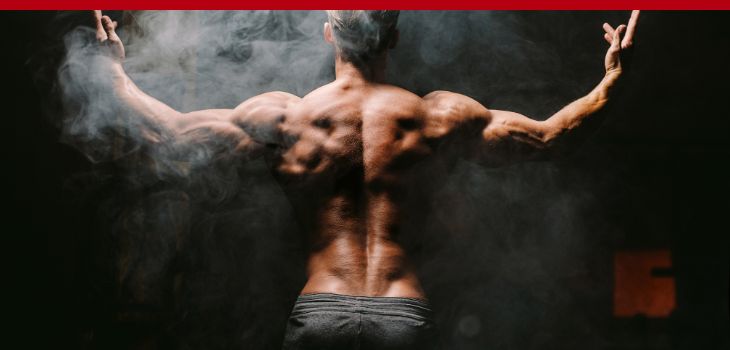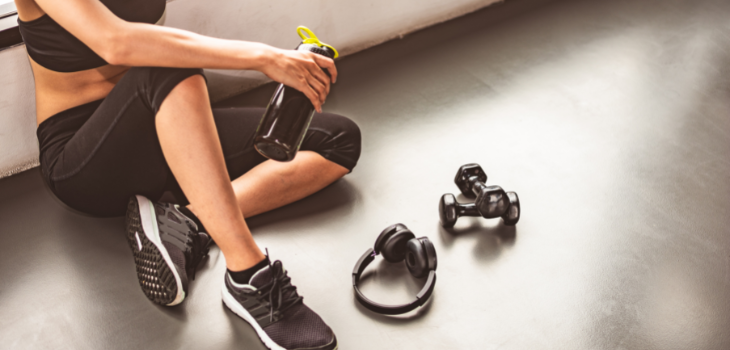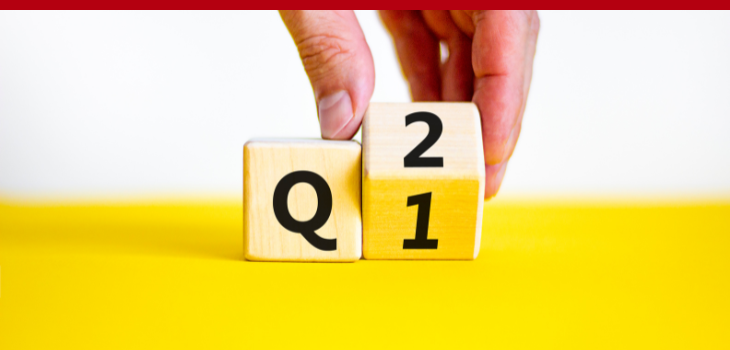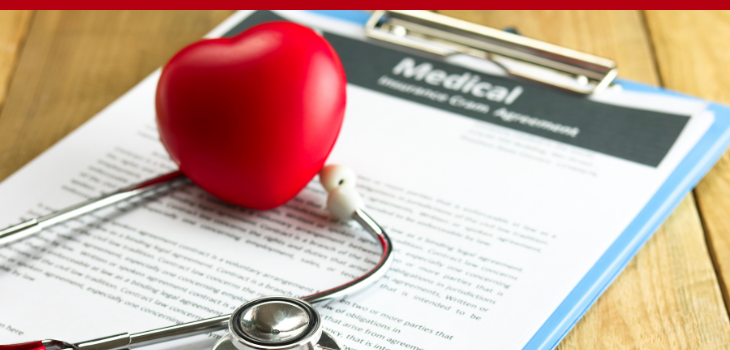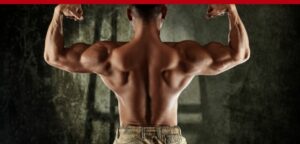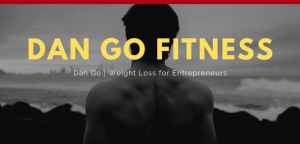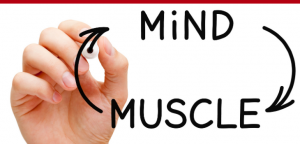by Ted Ryce
Muscle Building Training Series Part 2: 6 Smart Ways to Build Muscle Faster with Ted Ryce
If you didn’t read part 1 where I talk about the importance of focusing on building lean muscle in your 40, 50s, and 60s, click here to get access.
After reading about the importance of building your muscles in your 40’s, you should be concerned about a whole lot of other things associated with muscle building.
Attention: One of the most powerful things you can do for your health to increase your longevity is building and maintaining your muscles, especially as you grow older.
While we’ve dealt with the science and theoretical aspect in our first episode, we’ll be taking you through some of the practical aspects of muscle building in this second part of o0ur training series.
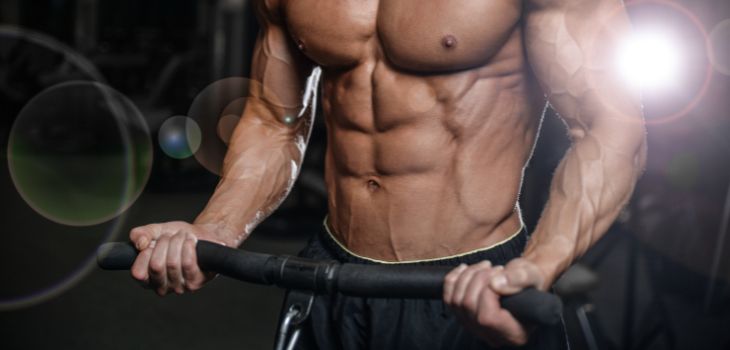
How Do You Build Muscle One-on-One
You might begin to wonder about the right way to build muscles one-on-one. Some of these include lifting heavy objects and consuming adequate protein for recovery. In the first episode, we discussed the aspect of lifting heavy objects briefly, and here, we’ll be going a little deeper.
What exactly happens when you lift heavy objects to build muscles? How do heavy objects lead to more muscle growth? As reported by Brad Schoenfeld in his review article, which was titled “The mechanism of muscular hypertrophy”, lifting heavy weights stimulates muscle growth in your body in three different ways.
For those who are nerds in muscle science, these mechanisms might make some sense. However, for those who are more competent in law and English without science-related background, the entire mechanism could seem like Greek, and that’s truly understandable.
Let’s take a brief look at the three ways:
#1 Mechanical Tension
There are times you are lifting a heavy object, probably in your garage or at the gym. Or maybe picking your kids. And when you do, you let out a little grown as you immediately feel the tension in your muscles
It’s known as mechanical tension, and it is one of the essential factors responsible for muscle building. The mechanical tension that the body experiences, such as picking up your kids and lifting weights, tends to create an electric chemical change that could lead to the growth of your muscles.
For super nerds, this is alternatively known as “mechanotransduction.” It’s simply how your body takes the physical stress and changes it into electrochemical activity. This form of sensory transduction is responsible for a number of senses and physiological processes in the body, including touch, balance, and hearing. But in the case of mechanical tension on your muscles, this is what leads to muscle growth
Of course, it’s challenging to lift heavy objects. Thus, the point of diminishing returns is that the level of tension you put on your muscles determines the rate of growth of your muscles. So, the heavier the weight you lift, the more your muscle grows. This doesn’t mean you have to lift heavy weights, but you need to lift heavier weight over time as your muscles get stronger to continue to build muscle.
#2 Muscle Damage
Muscle damage is the feeling of some sort of soreness in your muscles a day or two after training hard in the gym. The damage, which is usually caused by your workouts, begins with an acute inflammatory response. After the inflammation runs its course in your muscles and undergoes a repair, the body is better positioned to handle future workouts.
In fact, you may notice that you don’t even get sore anymore after you’ve been working out consistently. Though the feeling of soreness is still there due to your muscle damage, it doesn’t stop the growth of your muscles. And you shouldn’t panic at all.
Maybe you workout and you couldn’t walk for 5 days, or you had been experiencing a sore butt for a week. For many who feel that a workout without soreness isn’t working, it’s a wrong notion. In fact, the feeling of excessive soreness isn’t a good thing.
If you experience too much inflammation, it simply means that you’re actually breaking down muscle faster than you can build it. And so all that time that you’re not working out, and you are recovering from your soreness, your body’s just healing. Beyond that, excessive soreness and inflammation can even be bad for your body.
#3 Metabolic Stress
Many of us get that burning sensation while lifting muscles. And what many people don’t know is that a burning sensation, often followed by a big pump in the muscles, can cause your muscles to grow.
According to scientists, the pump we feel during tough workouts results from the muscle fibres filling up with water, and this swelling of the muscle fibre is believed to lead to muscle growth. Although you might be aware that numerous complex physiological processes underlie muscle growth, you should not have the impression that you need to be a scientist to build a great body.
If you have a basic understanding of how muscles grow, the principles behind it will help you design more effective workouts. More importantly, you will be able to spot the charlatans out there, pedalling useless pseudo-scientific nonsense.
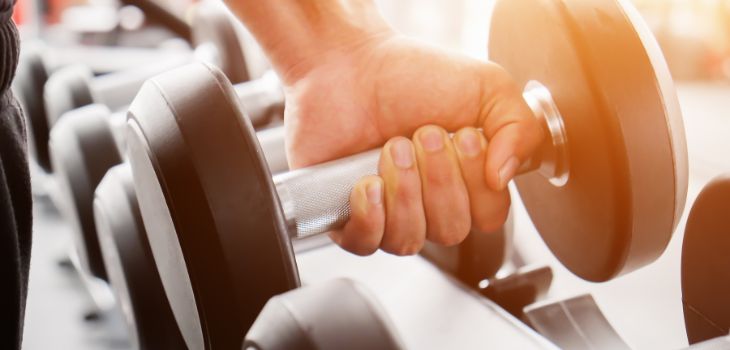
6 Smart Ways to Build Muscle Faster
Now, let’s get practical and tactical.
How do we use the science-related stuff discussed earlier in a practical way to achieve superior muscle growth? If you’re working out or on your way to the gym right now, we’ll be revealing six practical tips for building your muscles.
#1 Use Proper Technique
Many people are confused about what really matters to build muscle. And aren’t quite clear on what they should be focusing on in the gym to maximize their return on their investment of time and hard work.
Whether you’re there to transform your body or you’re there for health reasons, what matters most is utilizing proper techniques to establish a connection to feeling the muscles you’re trying to work.
In fact, Arnold Schwarzenegger was quoted to have said that “the body is very important, but the mind is more important than the body.” This quote from an old-school bodybuilder like Arnold Schwarzenegger is worth taking along with you to the gym and putting it into action.
Listening to music is cool, but you’re not there to count reps, and you’re not there to show off to other people. Your purpose of being there is to stimulate the muscles and transform your body. Don’t lift more than you’re capable of. Focus on your mind and muscle connection.
For instance, if you’re working on your chest muscles, focus on feeling your chest. If you’re working your legs, focus on feeling your legs. If you’re working your glutes, focus on feeling your glutes working. If you’re performing an exercise for specific muscles but you don’t feel them working, there’s a problem with your technique. Or how much weight you’re using. Or possibly something else.
Remember, your goal is to stimulate muscle growth. Therefore, you must learn how to properly activate your muscles during an exercise using the proper techniques.
#2 Work Hard
Sounds pretty straightforward, right?
Whether you’re lifting light weights or heavy weights, you should work until you significantly fatigue your muscles. As documented in a study published in the journal of applied physiology in 2016, lifting to the point of exhaustion is more important than whether the weight you lift is heavy or light.
You need to ensure that you work until you hit close to muscular failure. It doesn’t require that you go to failure, where you can’t lift it again, or you got to really use body English to lift. However, you should engage in the exercise and be consistent until you are one or two reps away from muscular failure. Ultimately, this will lead to more muscle growth and better results overall.
#3 Get Stronger
Besides performing every exercise to fatigue, one other important factor is to use heavier weights as you progress in your weightlifting journey. Truly, lifting heavier weights over time is vital to your results. If you’re a woman and you’re looking to tone your glutes, you better add weight over time with those hip thrusts you’re doing. If you’re a man and you want to see some muscle definition, adding weight to your exercises over time will help you do that. And no, you’re not gonna get “too big.”
If you want to transform your body, growing your muscles is essential. And if you’re a woman, you’ve got to grow it in the right places. Places like your butt and your hamstrings are great to focus on.
More so, if you’re lifting weights and you’re not doing it to build muscle, you’re defeating your purpose of visiting the gym. You can’t be focused on burning calories unless you’re delighted with the way your body is. Therefore, you should focus on building muscles.
#4 Work Your Muscles Frequently
You hit the gym five days a week. You engage in chest workouts on Mondays, work on your back on Tuesdays, and then your legs on Wednesdays. And you even do abs and shoulders on Thursdays and arms on Fridays.
What matters most is hitting a specific muscle group more than once a week, and this has been proven to lead to superior results. According to a 2016 systematic review, your frequencies of training also promote superior hypertrophic outcomes.
If the chest is something you’re focused on, hit it twice a week. You can do it on hit it on Monday, and then hit it on Thursday. Hit the muscle groups twice a week. After this, you can determine how often you are hitting the muscle groups that you want to see a difference in? Train your muscles at least twice a week, and you’ll see a significant improvement.
#5 Take a Rest Between Sets
Undoubtedly, this is another essential practical and tactical approach to achieving your muscle growth. If you’re that person who doesn’t like resting in between sets, it’s high time you better start changing your mindset, as it could be one of the reasons you do not see your desired results.
As documented in a 2016 study published in the journal of strength and conditioning research, resting one minute in between sets compromised muscle growth. Similarly, that same study found that resting for 2-3 minutes was optimal, leading to better strength and muscles. Therefore, you should endeavor to take that rest. So, you’ll see a much better improvement.
#6 Be Consistent
None of the other practical tips mentioned work unless you do this consistently. Why? Muscles follow the simple principle of “if you don’t use it, you lose it.” Although that may not be as scientific as the rest of the tips that we’ve outlined for you here, it’s arguably the most important.
Even if you stayed true to other principles and you’re not consistently getting to the gym, you’ll never get your desired results. Therefore, inconsistency lies in enjoyability. Find a workout that you can be consistent with and stick with it, and you’ll high your goal.
Best Exercises for Body Building
If you are fortunate to watch an average person working out, or an average trainer, you’ll see various exercises being used.
In fact, there are times you’ve probably looked at some people, and you asked yourself. What the hell are they doing? Especially if they’re hopping around on a Bosu ball, that half-ball thing, and they got lightweights while standing on one leg, and you’re probably like, what does that do?
While most exercises can have a place in your program, it’s best to focus on the biggest bang for your buck exercises if the best results are your goals. What are some big bang exercises? Let’s take a look at a few of them.
Squats
Squats are big-bang exercises, and they aren’t just barbell squats. The most popular ones are squats with a barbell on your back. Whether it is a barbell squat or a goblet squat, split squat, or single-leg squat, they are great big bang exercises you can engage in to achieve your strength and muscle growth.
Hip Hinges
These include Barbell hip thrusts, deadlifts, Romanian deadlifts, and back extensions. The pushes also form another big bang exercise group. Examples of pushup exercises include the Bench press, overhead press, incline press, and dips. Then, there are the pull-ups such as the chin-ups, inverted rows, seated rows, dumbbell rows, machine rows, and more.
Suitcase Carry
This involves picking up a weight on one side of your body and not having it counterbalanced with the other side.
Other big bang exercises include hollow body holds, farmer’s walk, waiter’s walk, gymnastics, side planks, hanging leg raises, dumbbell side bins, dragon flags, and more.
How many sets of reps should you do?
First of all, this depends on your goal. If strength is essential to you, then you need to lift a bit heavier. So 3-5 sets of 4-6 reps is an excellent range to lift in for both strength and muscle building.
If you’re looking to build more muscle and don’t care about strength, or you probably want a little bit of it, then 2-4 sets of 6-10 reps is a good range, or even six to 12 reps is a good range. That’ll get you a bit of strength as well as muscle growth.
Tip #1 Warm-up Before Your Workout
Walking into the gym, throwing some plates on the bar are a few of the ways to your workout. However, this isn’t a great idea if you’re in your 30’s, 40’ and you’ve got some wear and tear on your joints. A proper warm-up will increase your blood flow and will lubricate your joints before getting started. This goes a long way to help prevent injuries and keeps you healthy in the long run.
Tip #2 Focus on Form
Of course, we’ve covered the aspects of exercise sets and reps, but proper technique ensures that you’re working the right muscles during each movement. This will go a long way in preventing injuries and helping you get the best results.
Tip #3 Stimulate. Don’t Annihilate
You’re not there. Yes, you got to work to exhaustion, and it may feel like you annihilated your muscle in that set. Take a look at this scenario; if you were like Paul after the jujitsu class, where he had to lay down for 5 or 10 minutes after the workout was done, just so his heart rate would return to normal and he could breathe and move again. That’s too much. Desisting from attending classes because you felt they were killing you is a sign of annihilation too.
Also, if you can’t comb your hair or walk right a few days later because you destroy your muscles, that’s annihilation too. Focus on challenging yourself and not destroying yourself.
Tip #4 Track Your Progress
One of the most effective tips to ensure that your workouts are actually working is to keep a training journal. For instance, you can have an old iPad to keep all the exercises on from the comfort of your home.
Whatever you do, even if it’s just writing it down in an old-school pen and paper journal, do it. Finally, in the opinions of people like Peter Drucker, “what gets measured gets improved.” And this definitely is true when it comes to tracking your workouts.
There you have it! Perhaps everything you need to know about building muscle in your 40’s. If you have learned something new, it’s high time you put it into action.
And then, you’ll achieve your strength and muscle goals in no distant time.
Related Episodes:
520: 5 Ways to Force Your Body To Build Muscle Faster with Ted Ryce
Links Mentioned
Watch My FREE Body Breakthrough Masterclass
Want To Lose Fat, Transform Your Body & Live Your Best Life In 2023?
I’m offering this blueprint that will lead you to a fail-proof long-lasting result with your body, with your health that will help you reach that potential that you have inside and become your own super self.
If you’re interested in working with me, you can reach out to my chat team and tell them a little bit about your situation and see if working with me would be a good fit for you.



